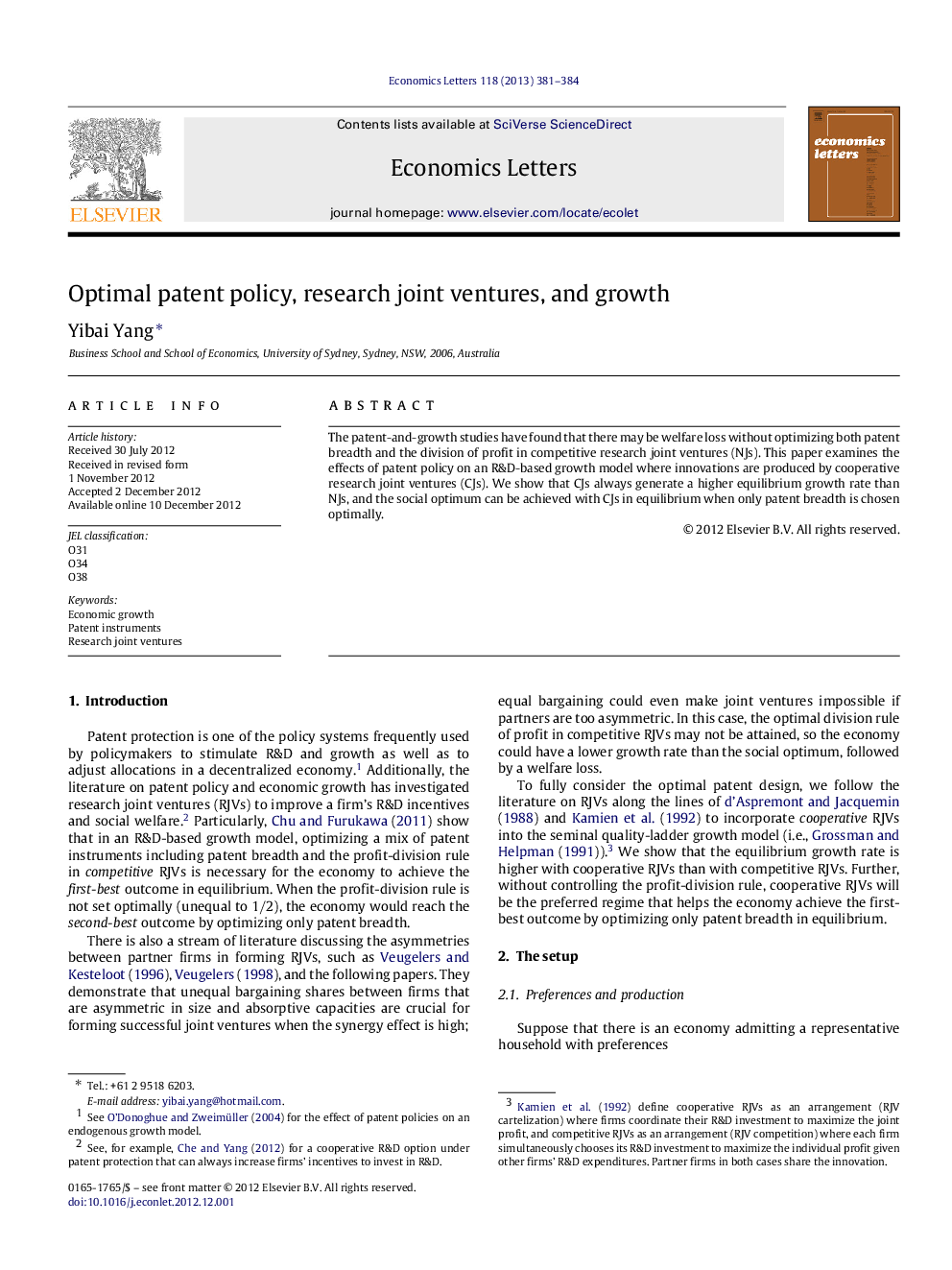| Article ID | Journal | Published Year | Pages | File Type |
|---|---|---|---|---|
| 5060010 | Economics Letters | 2013 | 4 Pages |
The patent-and-growth studies have found that there may be welfare loss without optimizing both patent breadth and the division of profit in competitive research joint ventures (NJs). This paper examines the effects of patent policy on an R&D-based growth model where innovations are produced by cooperative research joint ventures (CJs). We show that CJs always generate a higher equilibrium growth rate than NJs, and the social optimum can be achieved with CJs in equilibrium when only patent breadth is chosen optimally.
⺠We examine the effects of patent policy on an R&D-based growth model. ⺠Innovations are produced by cooperative research joint ventures (RJVs). ⺠Cooperative RJVs generate a higher equilibrium growth rate than competitive RJVs. ⺠Cooperative RJVs help achieve the social optimum by optimizing only patent breadth.
